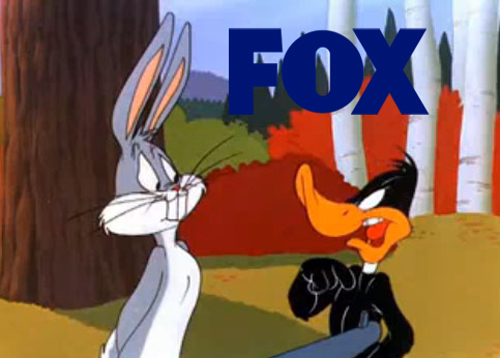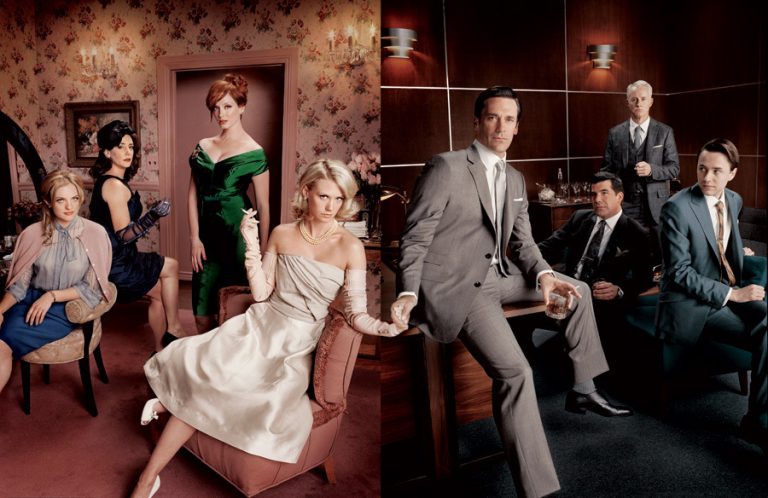(This is the repost of an article posted back in January 2010).
Sure, it’s getting to be old news. Network TV ratings are down. The reasons are plenty. Advertising is down. Numbers aren’t being counted accurately because more people are watching shows online, with DVRs, and DVD sets. The antiquated ratings system needs an overhaul. The current business model doesn’t work.
Yeah, that’s all probably true, but the state of the system today all happened because of the corporate media mergers and their never ending chase for that new source of revenue. Their actions increased income in one area but ended up cannibalizing others. What’s happening is the result of the age of corporate media. This is part one of several articles that will examine why Network television is in the mess it’s in today. There’s a long history that explains what’s happening and the various reasons why what used to work no longer does. Before going forward though, a brief look at the history of networks is required. We need to see in their business dealings how they got here. Part one is a history lesson.
For fun, let’s go back 30 years to 1979 when TV wasn’t doing so well either. Back then NBC was a last place network and 60 minutes, a non-scripted show, was the number one program, drawing about 21.6 million seasonal average. The top twenty had some wonderful critical darlings like Taxi and WKRP in Cincinnati, some aging favorites like M*A*S*H, and super lite fare in Three’s Company, That’s Incredible!, Dallas, The Dukes of Hazzard, Real People and CHiPs. We won’t even mention the other awesome stuff that didn’t make the top twenty, like BJ and The Bear, Charlie’s Angels, The Love Boat and Fantasy Island. We had just said goodbye to stunning cancellations of Starsky and Hutch, Good Times, What’s Happening!, Welcome Back Kotter, and my favorite, Wonder Woman. In other words, back then they had a lot of crap too.
In 1979, ratings were kind of low. Lower than previous years anyway. Cable wasn’t an issue. It existed, but was an outlet for off-net syndication. Most homes didn’t have VCRs yet, especially since they were expensive and the big war was brewing between VHS and Betamax. If someone missed their show, they had no choice but to wait until it came on again months later in reruns, or years later in syndication. At the time, the networks weren’t owned by any large conglomerates nor were they producing their own shows. They weren’t allowed to. The number of households watching TV was increasing, but overall ratings wasn’t. Bottom line, what was being aired was pretty bland.
Lucky for network television, a game changing creative resurgence was just around the corner. That and Dallas getting delightfully trashy. But I’m not ready to get into that yet. We need to go back farther.
Even More Ancient History
You see, once upon a time networks did their own shows. At first advertisers used to pay for programming and owned time slots. The demand for these slots grew and the networks realized they could make bigger profits by selling to multiple advertisers. As a result, they wrestled programming control away from these advertisers and also the creative control. As networks soon learned though, TV production was cumbersome. They also learned that creatively they weren’t the best at coming up with good ideas. Enter the independent production company.
How could networks not go with the independent producers? These producers brought with them talent and the willingness to do all it took to run a show. They took over the costs of the producing the show and had to find their own advertisers to underwrite most of the costs. Some of you might remember that MTM Enterprise produced shows were often “brought to you” by Proctor and Gamble. Advertising didn’t cover all these costs though so many of these producers ate the cost up front with hopes that if the show was successful, they would reap rewards later in second run syndication. These producers were constantly under pressure to provide good programming for maximum profit. They didn’t have much margin for error.
The networks of course got their lion’s share for they were providing the air time for these independent producers to air their shows. They obtained the rights to many of the shows which paid off big time for them later in second run syndication. However, the independent producers got pretty rich themselves on this arrangement. The most notable early independent studio was Desilu Studios, formed by Desi Arnaz and Lucille Ball. They figured out that by producing their show they would make far more money than just acting in one. I Love Lucy generated huge profits for Desilu in syndication. That allowed them to take on other projects and pretty soon they were rivaling in size some of the major film studios. At the time, this was unheard of for any studio producing TV.
Because of the success of Desilu, other actors realized that the real money was in producing their own shows. Jack Webb did it with Dragnet and earned quite a bit of money on his long running franchise and did a lot of other actors. There was a problem though. By the late 60’s, these independent production companies were at the whim of advertisers and networks and producing a lot of fare without a lot of substance. Shows like Dragnet, Adam-12, Green Acres, The Beverly Hillbillies, Petticoat Junction and others were all starting to look the same. They were also failing to attract upscale viewers which was what the advertisers wanted.
Enter MTM Enterprises (Mary Tyler Moore and Grant Tinker) and Tandem Productions (Norman Lear and Bud Yorkin). Right around the time they emerged as a powerhouse, that’s when the Fin-Syn rules were implemented. Those rules imposed by the FCC in 1970 were meant to protect the Independent Producer from the meddling of the networks. The networks were not allowed to own any of the programming they aired in primetime. The idea was that by allowing the networks to distribute, produce, and exhibit programs that unfairly gave them all the power. These rules were very controversial but did pave the way for a quality revolution of sorts.
Tandem took television to a whole new level with All In The Family, Maude, Good Times, The Jeffersons, and Sanford and Son as well as others by exploring social themes no other shows before would have dared to take on. MTM set the bar high in television writing with classic and high quality shows like Mary Tyler Moore, The Bob Newhart Show, Rhoda, WKRP In Cincinnati and then with dramas like Lou Grant. However, it was when struggling last place network NBC decided to hire Grant Tinker as their CEO that MTM really took television to a new direction. They introduced Hill Street Blues which changed the landscape of television drama forever. The gritty scenes with the documentary feel and characters wrestling with huge issues of social conscience finally took television to a whole new level that previously had only been done in film. This greatly closed the gap between television and film and much of the bias that existed in the industry.
Oh, but with the innovation also came the increase in expense. At one point, it cost 13 million dollars to do one episode of ER. Larger independent studios could still finance such projects though because of their back catalogs and their track record of dependable programming that would lure in big viewers. Aside from MTM and Tandem, other big players included Lorimar (Dallas, Falcon Crest, Eight Is Enough), Aaron Spelling Productions (Love Boat, Fantasy Island, Dynasty, Charlie’s Angels, Beverly Hills 90210, and Melrose Place), Steven J Cannell Productions (The Rockford Files, The A-Team, Hunter), and Carsey-Werner (The Cosby Show, A Different World, and Roseanne).
So what happened to these great independent production companies? For one, many were bought out when their back catalogs proved to be too valuable for TV studios to ignore, especially when these TV studios were purchased by multi-national conglomerates. Desilu was bought out by Paramount Television in 1967. MTM was bought by News Corporation (20th Century Fox Television parent) in 1996. Lorimar was purchased by Warner Communications (now folded into Warner Brothers Television) in 1993. Tandem went through a number of changes including being folded in the Embassy Television. The rights for their programs are currently owned by Sony. Aaron Spelling productions was absorbed by Paramount. Steven J. Cannell Productions was bought by New World Communications, which was eventually acquired by News Corporation.
The New Era
Independent producers didn’t go away, they just started working with the emerging TV studio powerhouses who had the capital to pay for all these expensive productions. TV couldn’t be ignored by the film studios anymore who all started their own TV divisions by now. Paramount Television was the first to emerge especially after the purchase of Desilu. Warner Brothers Television Group. Universal Television. 20th Century Fox Television. Suddenly the studios were bearing the costs and reaping the rewards. However, the independent producer is still used today and given creative latitude; the chance to run the show and get a piece of the pie. A much smaller piece.
In 1993, everything changed when the Fin-Syn rules were eliminated and eventually networks and studios were becoming part of the same corporate umbrella. 20th Century Fox Television already had their new network going to some varied success (Fox), Warner Brothers Television formed their own network, The WB, and Paramount formed their own network as well, UPN. NBC was purchased by GE in 1986 and Universal Studios, including their TV arm, was purchased by GE in 2004 as part of their Vivendi SA Universal Entertainment acquisition. In 2000 Viacom, the owner of Paramount Studios, merged with CBS. Eventually CBS Paramount Television was formed. The last merger happened when Disney, having acquired ABC, launched the Disney-ABC Television group in 2004.
So what’s happening now that studios and networks are all part of one happy family? An increasing number of “in-house” shows. The studios own, finance, and produce the shows and then sell them to their sister network often at a lower license fee knowing that the corporate parent will make out in the end with DVD distribution and syndication. A large percentage of a network’s schedule is now produced by their sister studios. Even that arrangement though isn’t going so well anymore. In part two, I’ll look at what releasing shows on DVD (and previously VHS) did to ruin the whole lucrative syndication market and overall ratings.
——————————————————-
Sources: “Independent Production Companies,” The Museum of Broadcast Communications. http://www.museum.tv/eotvsection.php?entrycode=independentp
Tvbythenumbers.com
www.classictvhits.com/tvratings
“The Financial Interest Syndication Rules,” The Museum of Broadcast Communications. http://www.museum.tv/eotvsection.php?entrycode=financialint






